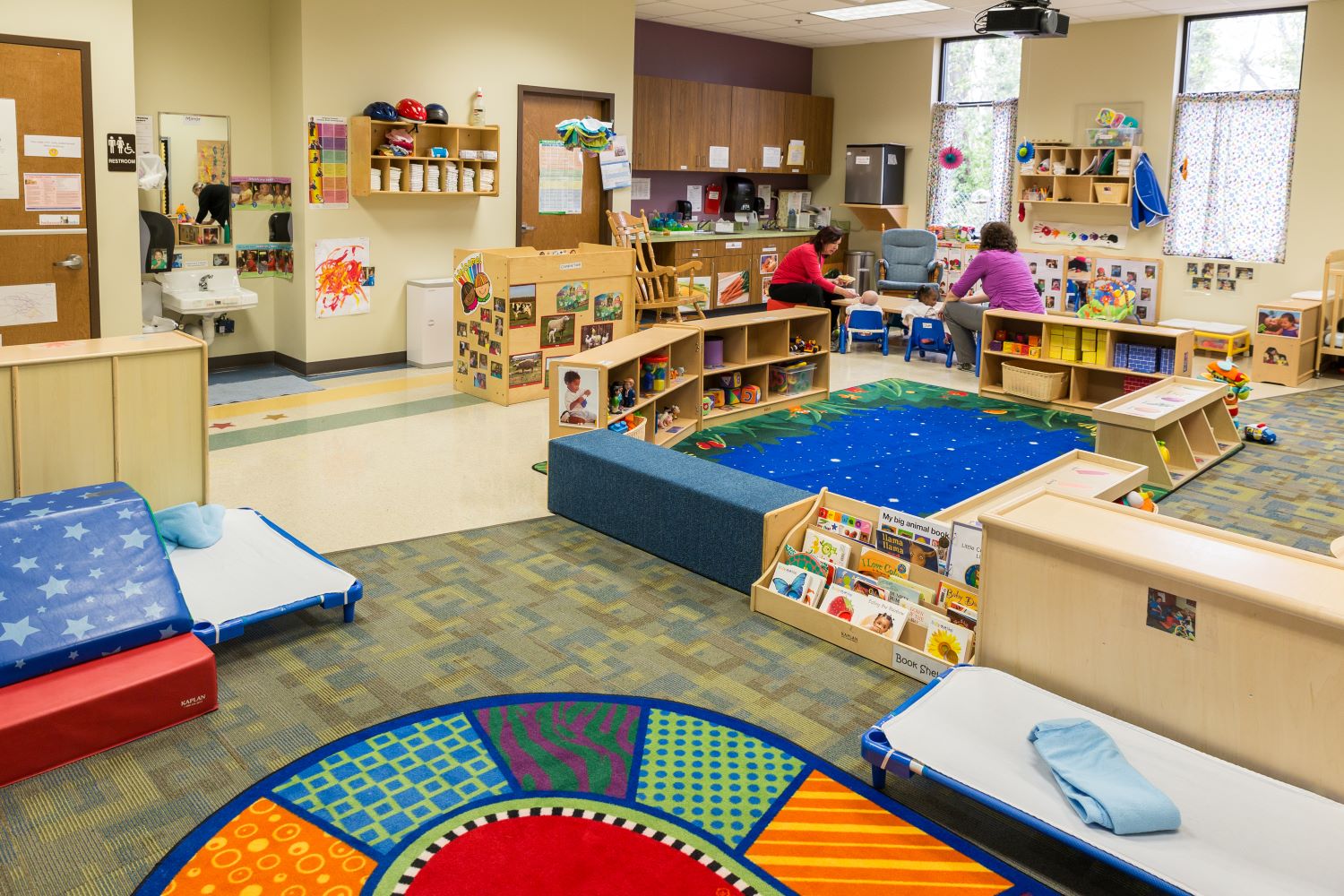
Individualizing the environment includes both physical and social aspects. The social aspects — in particular, interactions (responsive relationships) between infants, toddlers, and adults — are addressed earlier. This section focuses on the physical aspects. The physical environment affects the way children and adults feel and behave. It is important for teachers, home visitors, and family child care providers to keep that connection in mind as they seek to create or modify environments that respond to each child’s development, interests, and needs. (See 45 CFR §1302.31(d) and 45 CFR §1302.35(c)(3).)
Here is an example from a home-based setting.
This is Maria’s third visit to the Naya family’s apartment. They have a 1-year-old boy named Sunil. Maria and Sunil’s mom, Sheela, planned to focus on Sunil’s gross motor development during this visit. At the last visit, Maria had noticed Sunil pulling up on the glass coffee table. Each time he pulled himself up and started to take steps, Sheela said, “No Sunil, you can’t stand there, it’s not safe for you,” and gently moved him away. When Maria commented on that, Sheela admitted that although she’s excited about Sunil’s growing abilities, she’s worried about his safety. Maria suggested using other furniture items that are safer to pull up on. Sheela identified three small hassocks in the living room that could be used. Today, they put their plan into action.
Maria and Sunil move the hassocks into the middle of the room and place them just far enough apart so Sunil will have to take a step or two to reach the next one. As Sunil pulls up on one of the hassocks and pats the top, Maria encourages Sheela to move to the next hassock and call to him. Sheela says, “Sunil, look where Ma is” and pats the next hassock. Sunil tries to reach the hassock by stretching his arm toward the surface but can’t quite get there. He stops, looks at his mom, then carefully moves around the hassock he is holding on to and gets as close to the next one as possible. Still unable to reach, Sunil lets go, balances, and then takes two small steps and reaches the second hassock. Sheela smiles and exclaims, “You did it, Sunil, you walked!” Sunil opens his eyes wide, looks at his mom, and squeals in delight.
Indoor and outdoor environments where infants and toddlers live, play, and learn are not static. Responsive adults change them over time as children develop and their interests and needs change. For example, they may:
- Rearrange the physical space (like in the vignette about Sunil)
- Rotate toys, materials, and equipment
- Reflect each child’s and family’s life, home culture, and home language(s) in group care and socialization settings
Education staff must pay attention to health and safety practices, regardless of setting. But it is important to balance these practices with opportunities for each infant and toddler to move and explore as freely as possible without unnecessary restrictions. For more information, review these resources:
- Environment as Curriculum
- Learning at Home and Homelike Environments
- Socialization Environments in Head Start and Early Head Start Home-Based Programs
- Using Materials Found in the Home in Head Start and Early Head Start Home-Based Programs
Read more:
Resource Type: Article
National Centers: Early Childhood Development, Teaching and Learning
Last Updated: December 22, 2020